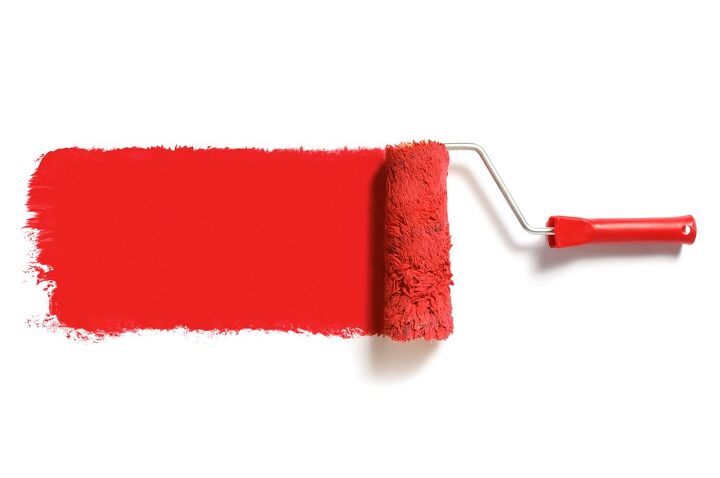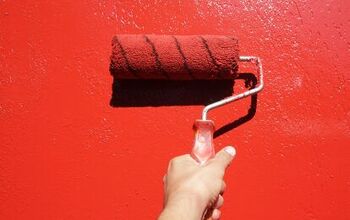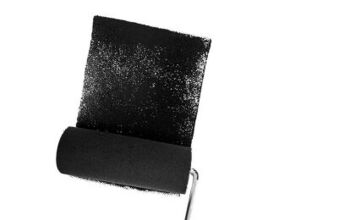What Color Primer For Red Paint? (Find Out Now!)

Painting projects can be tricky, so we all have questions. And that’s especially true when it comes to applying primer. How is it done? Why is it important? And what color primer should you use with red paint? Here are your answers.
It’s best to use a gray-tinted primer with red paint. Primers that are tinted red might not give you the results you want. That’s because a gray basecoat helps you cover the area and do touchups much faster.
Do You Need to Hire a Paint Contractor?
Get free, zero-commitment quotes from pro contractors near you.

What’s the Purpose of Using Primer Before You Paint?
Primer evens out the surface that you’re getting ready to paint. It also helps hide flaws and protects the item from moisture, temperature changes, and corrosion. But the level of protection usually depends on the type of primer you use.
In most cases, experts recommend using high-quality primer because it creates a more solid finish. You can go back to fix mistakes more efficiently too. Priming liquids prepare your product for a facelift. So, don’t skip this step.
DID YOU KNOW: Applying primer helps prevent common paint problems that can cost you money. You can virtually eliminate issues such as peeling, cracking, and bubbling with a few quick coats.
What Happens If You Don’t Prime Before You Paint?
Skipping the primer may be acceptable in certain situations, but old or wooden objects are usually exceptions. If you apply paint only, you could run the risk of watching it crack, peel, or fade. Plus, it may be more challenging to maintain over time.
Priming before you paint is extra crucial if you live in humid conditions. It adds a shield against water and helps the paint adhere to your objects better. Besides, adding color straight to your walls, floors, or countertops can stain other things. But primer can stop the bleeding.
What Color Should Primer Be?
There isn’t a specific color that primer has to be. That’s why it comes in several hues, from black and gray to red and white. However, the color of primer you should use won’t necessarily match the paint you choose. For example, red paint looks best over gray primer.
Consider the purpose of priming. It’s supposed to create a solid basecoat for your color. It also brings out the natural hues of your paint while making the surface easier to clean. So, the color is both essential and secondary to the finished product.
DID YOU KNOW: If you apply primer unevenly, the thin spots may prove more challenging to maintain.
Does Primer Affect Paint Color?
If you’re not careful, the color primer you use could change the way your paint appears. And that’s especially true if the paint is thin. Heavy basecoats can seep through low-quality paint. So, either buy thicker liquids or use a paint and primer combo.
Also, keep in mind that the wrong primer color can lighten or darken your paint. For instance, a black basecoat under red paint might make the red seem deeper than it is. Then, you’ll be fighting to create the aesthetic you first imagined. Use gray or white primer instead.
TIP: Test your color combination on a piece of scrap, then let it dry to determine the final shade.
Do I Add Primer on Top of Old Paint?
You can save some time by adding primer right on top of old paint. But that may prove to be a mistake in the long run. Priming prepares the surface for a fresh coat. So, it’s only a good idea to skip the primer under certain circumstances.
You probably don’t need extra priming if the paint color is still the same. Plus, you can usually skip it if the same brand makes both paints. However, it’s always a good idea to check the labels for detailed instructions. And never forget to scrape off chipping paint before adding new color.
TIP: Even if you’re using the same paint, try to apply at least one coat of primer to seal the deal.
What Color Primer Should I Use With Red Paint?
Red paint typically deserves a lighter, more solid undercoat. It’s because red is a peculiar color. The shade mixes several other colors to create the hue that you prefer. And those multidimensional elements can show on an unprimed surface if you’re not careful.
So, use a gray primer with red paint for the best results. And try to let it dry completely before applying a second coat. Remember, primer can dry lighter or darker than you expected, just like your paint. So, it’s best to take it one step at a time.
How Long Should Primer Sit Before Painting?
You can leave primers unpainted for quite a while. But that also depends on the type of product you’re using. Most standard latex wall paint primers give you about 30 days before you need to recoat. As always, check the label for specifics.
Meanwhile, oil-based primers may not last as long. You typically have about 14 days before you need to reapply most oil-based primers. However, you can also use extended-stay products to give yourself more time between coats. Either way, make sure the surface is clean and sanded before applying new paint.
Do You Apply Primer with a Brush or Roller?
It’s your choice whether to apply primer with a brush or roller. And it depends on the surface you’re trying to cover as well. Smaller spaces may not receive rollers very well. But you can cover larger areas much more quickly with a roller.
Paint rollers can also help give your surfaces a smoother finish. That’s because paintbrushes may leave streaks behind if there’s not enough primer on the bristles. So, while the primer doesn’t have to be perfect, a brush can cause problems you never anticipated.
As a general rule, always test your color combination and application methods at the same. That way, you’ll get a better view of how your finished product will look. Then, adjust your technique to create the color you’ve always wanted. And remember, your project may not appear as expected until it’s completely dry.
Does the First Coat of Paint Always Look Bad?
Some people get discouraged when priming and painting their walls because the first coat can look splotchy. But that’s relatively normal. And if you use thin, low-quality paint without a built-in primer, the streaks can look even worse. Try not to panic.
Expect the first one or two coats of paint to appear uneven. As one layer is applied, the last later continues to dry. You probably won’t see the final color until it’s all done. However, you can add as many layers of paint as you want. Just don’t make it look cakey.
Related Questions
Is One Coat of Primer Enough?
The number of primer coats you need depends on the type you use. Generally, higher quality products spread better and require fewer coats. However, that’s not always the case. Always read the label to find out specifics. And expect to apply at least two coats for most painting projects.If you use self-priming paint, you may be able to skip this step. Or, if you’re repainting a surface the same color, you may not need to prime it at all. Whatever the case, at least one coat of high-quality primer is ideal for most painting projects.
What Is Self-Priming Paint?
Self-priming paint acts as an adhesive color coating and doesn’t need an extra layer of primer underneath. It automatically seals to the surface, which saves tons of time and money. That’s also why you would typically use it when repainting a surface the same color.All-in-one is the type that has color and primer in the same container. The two substances mix to create an all-in-one solution that goes on smooth and cleans up quickly in most cases. However, all-in-one may not be the best solution for every project. So, talk to a professional for more information.
Do I Sand Between Coats of Primer?
Some say sanding between coats of primer is pointless. Others say it’s a necessary step. But the key is to create a smooth surface before applying paint. So, you may be required to sand the texture if you let the liquid gunk up or lay it unevenly.Sand your stuff before painting it but try to use minimally abrasive sandpaper. Doing so can help you control the depth and scrub away small mistakes without compromising the coat. Meanwhile, ask a professional painter for more specific details.
Do You Need to Hire a Paint Contractor?
Get free, zero-commitment quotes from pro contractors near you.

Make Your Project Perfect Every Time
Make your paint job look like a professional did it. First, apply a gray primer beneath your color. Then, use the best paint to cover imperfections and enjoy a flawlessly finished product.
Related Guides

Tiffany Nichols specializes in aesthetics, design, marketing, and manufacturing. She's a copywriter and editor for several home renovation companies in the U.S. and works alongside some of the biggest names in the industry. Her hobbies include architecture, art, mental health, and fashion.
More by Tiffany Nichols



























